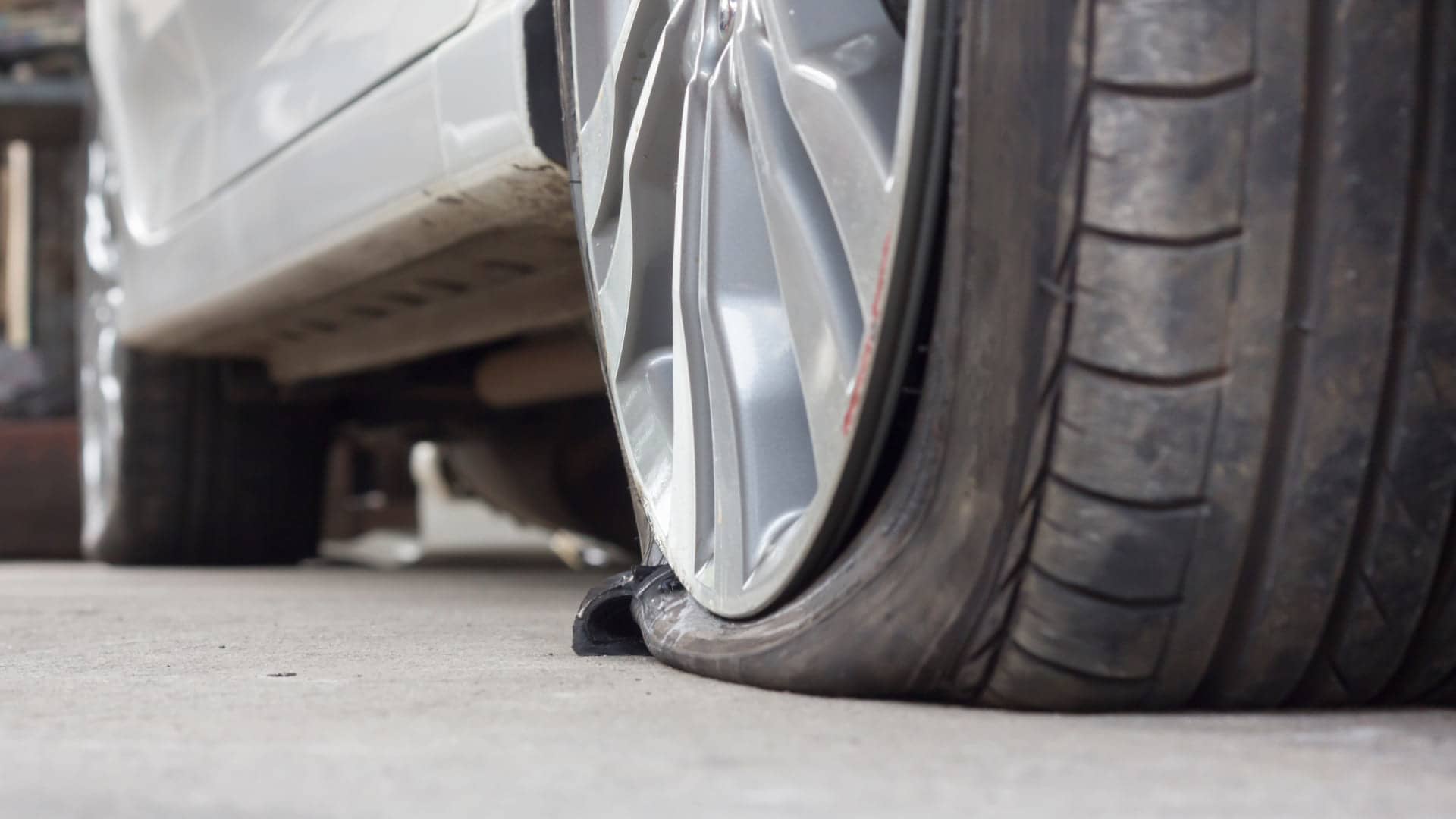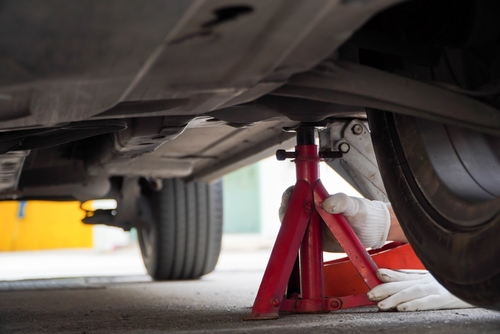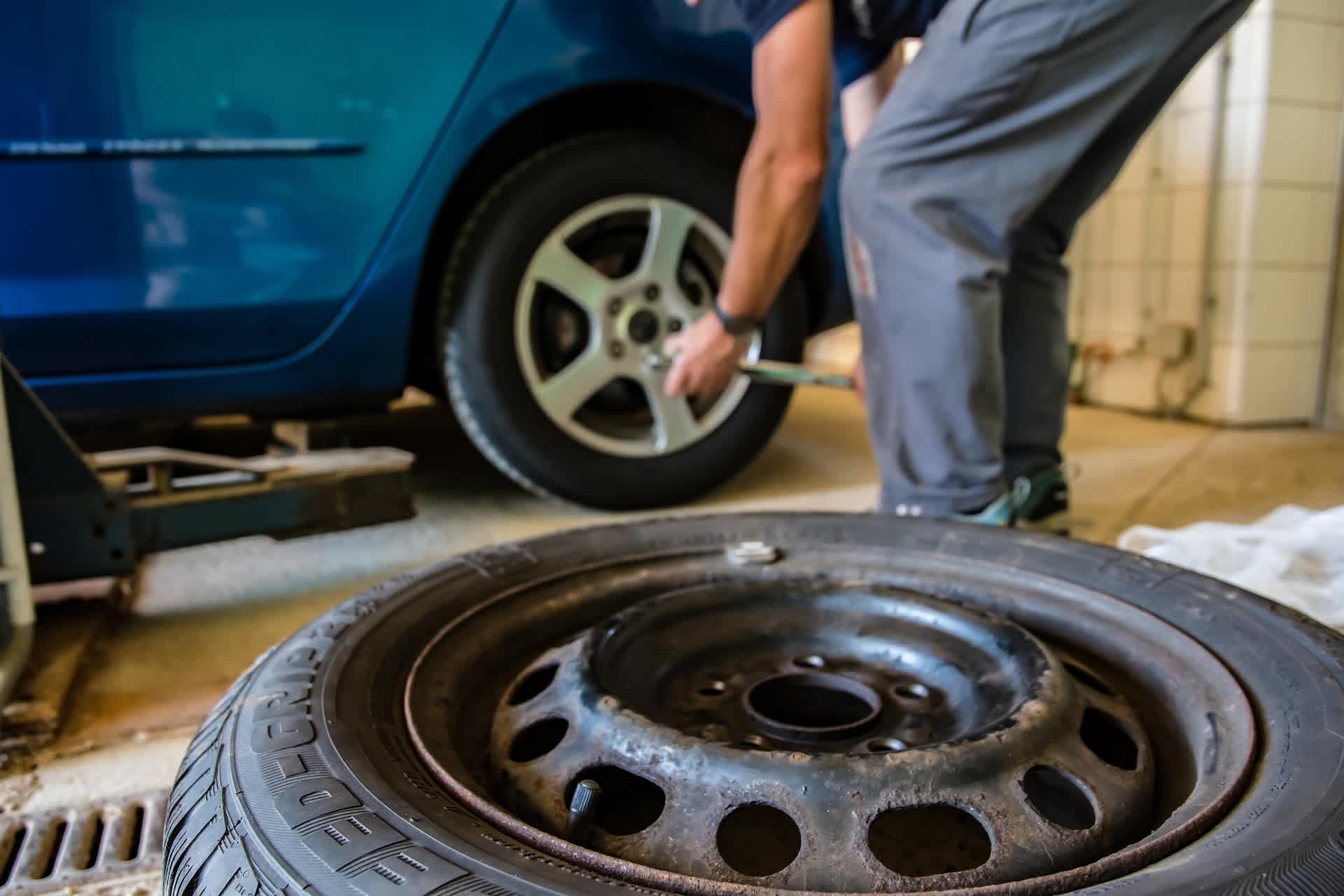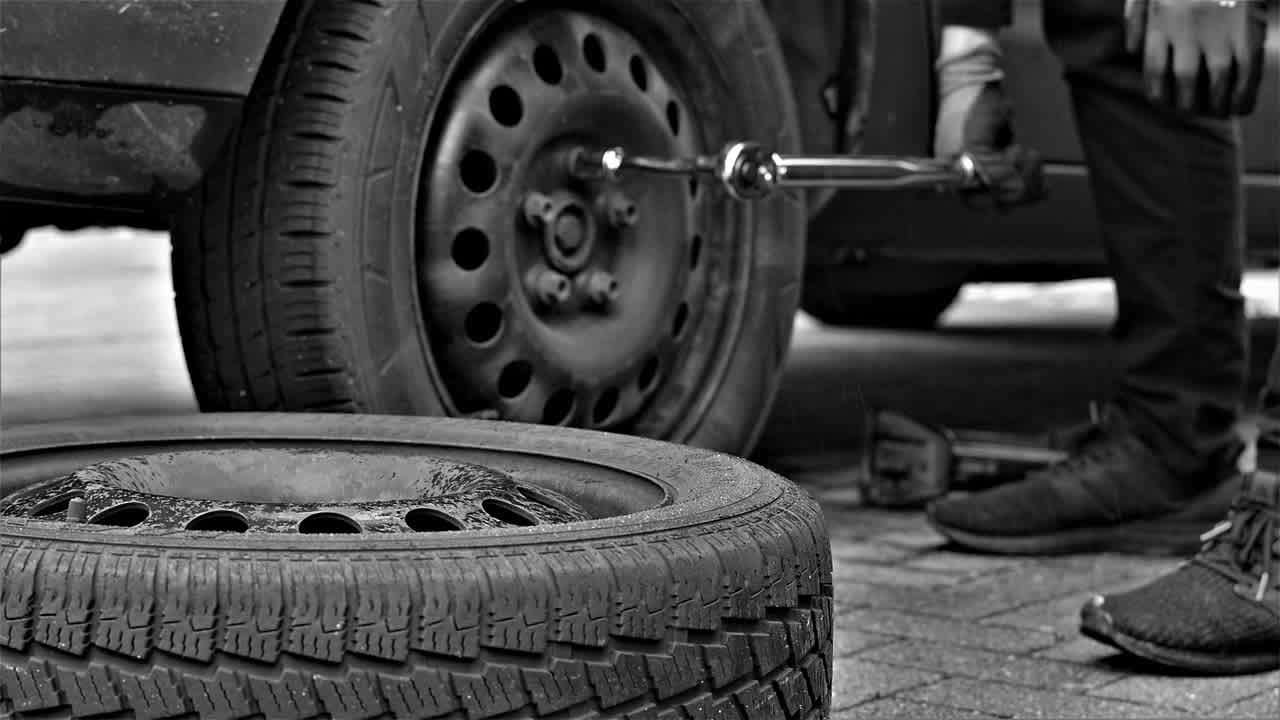Tire Maintenance Safety
Free shipping
Best price guarantee
Special pricing
Financing with Resolve
Easy returns

A flat tire can be a frustrating and stressful experience for any driver. Whether you're on your way to work, running errands, or embarking on a road trip, a flat tire can quickly derail your plans and leave you stranded on the side of the road.
Fortunately, changing a flat tire is a skill that every driver can learn. By familiarizing yourself with the process and having the right tools on hand, you can quickly and safely change a flat tire and get back on the road.
In this article, we'll walk you through the step-by-step process of changing a flat tire. We'll cover everything from the tools you'll need to safety tips and common mistakes to avoid.
What is a flat tire?
A flat tire occurs when one or more of your vehicle's tires loses air pressure, causing it to deflate and become "flat." This can happen for a variety of reasons, including punctures from sharp objects like nails or glass, slow leaks due to worn or damaged tire valves, or sudden impact with potholes or curbs.
When a tire goes flat, it can cause a number of problems for your vehicle. First and foremost, driving on a flat tire can damage the wheel and the tire itself, potentially leading to costly repairs. Additionally, a flat tire can cause your vehicle to pull to one side, making it difficult to control and increasing the risk of an accident.
If you experience a flat tire while driving, it's important to pull over to a safe location as soon as possible. Continuing to drive on a flat tire can cause further damage to your vehicle and put you and other drivers at risk. Once you've safely pulled over, you can begin the process of changing your flat tire.
How to change a flat tire

Addressing a flat tire involves a series of precise steps, each designed to ensure your safety and get you back on the road. Start by assembling crucial tools: a lug wrench, a tire jack, and a spare tire in good condition. Consider additional safety items like a reflective vest and warning triangle to improve visibility while working roadside.
Preparing Your Vehicle
Begin by securing your vehicle on a solid, level surface away from traffic. Activate your hazard lights to signal other drivers, then engage the parking brake to prevent movement. If available, use wheel wedges to further stabilize the car. Place your warning triangle at a safe distance behind the vehicle to alert oncoming traffic.
Using the Tire Jack
Identify the correct jacking point on your vehicle—usually specified in your owner's manual. Position the jack properly to avoid damaging the car and raise the vehicle until the tire is off the ground. Check the jack's stability throughout this step to ensure safety.
Removing and Replacing the Tire
Loosening the lug nuts slightly before lifting the car is crucial; use the lug wrench for this task. After elevating the vehicle, fully remove the lug nuts and take off the flat tire. Check the wheel hub for any debris or damage that could affect the fit of the spare tire. Align the spare tire with the wheel bolts and tighten the lug nuts by hand initially. Once the vehicle is lowered back to the ground, secure the lug nuts in a star pattern to ensure even pressure distribution.
Following these steps will enable you to change a flat tire effectively, ensuring a smooth continuation of your travels. Regular checks of your spare tire and practicing these procedures can prepare you for any unplanned roadside situations.
1. Tools needed to change a tire
Having a comprehensive toolkit is vital for tackling a flat tire efficiently. The critical components include a tire iron for loosening and tightening bolts, a hydraulic jack or mechanical jack for lifting the vehicle, and a spare tire that is in optimal condition. These tools are indispensable for a successful tire replacement procedure.
Essential Safety Gear
Prioritize safety by utilizing appropriate gear. A high-visibility safety vest can significantly enhance your visibility to other drivers, especially during nighttime or adverse weather conditions. Additionally, deploying a roadside warning triangle ensures approaching vehicles are aware of your stationary position, reducing the risk of accidents. These safety measures are small but crucial additions to your roadside toolkit.
Maintaining Your Spare Tire
Ensure your spare tire is always ready for use by conducting routine inspections. Check its inflation level and look for any signs of wear or damage to confirm it's dependable in an emergency. Incorporating this check into your regular vehicle maintenance routine—similar to monitoring tire pressure or oil levels—will keep the spare tire functional and reliable.
By equipping yourself with these tools and maintaining their condition, you can manage a flat tire situation with assurance and efficiency. Keeping these essentials readily available in your vehicle will simplify the process and assist you in handling unexpected roadside incidents effectively.
2. Safety tips for changing a tire
Safety is paramount when changing a flat tire, and taking the right precautions can make all the difference. First, ensure your vehicle is on solid ground, choosing a surface that stays firm to prevent any slippage. Always remember to use your vehicle's signals to communicate your presence on the roadside.
Securing Your Vehicle
When the car is stationary, shift into park or engage the handbrake to keep it immobile during the tire change. This small step enhances stability, making your workspace more secure. Using wheel chocks can further stabilize the vehicle, particularly if the road has a slight gradient; this prevents any unintended movement.
Enhancing Visibility and Communication
Placing a reflective triangle or cones behind your vehicle increases awareness for drivers approaching from a distance. This proactive measure provides them with ample time to adjust their speed safely. Wearing bright-colored or reflective clothing during the process enhances your visibility, especially in dim conditions, ensuring you're easily noticed.
By implementing these safety strategies, you can approach changing a tire with greater assurance, knowing you're taking all necessary precautions to protect yourself and your vehicle.
3. How to use a tire jack

Mastering the use of a tire jack is crucial for effectively changing a tire. Start by familiarizing yourself with where the jack should be placed; your vehicle's manual will usually provide this information. These points are reinforced to bear the car's weight securely, ensuring a safe lift and reducing the risk of the vehicle slipping during the process.
Positioning and Elevating
Once you have identified the correct location, slide the jack under the vehicle, ensuring it's aligned to maintain balance. Proper alignment is key to preventing the car from shifting unexpectedly. Begin to crank the jack handle to lift the vehicle, elevating it just enough for the tire to clear the ground for easy removal and replacement.
Stability and Precautions
Before removing the tire, ensure the jack is stable and the vehicle is steady. The jack should remain upright, with its base firmly on the ground. On soft or uneven surfaces, it's advisable to use a solid board under the jack to prevent it from sinking or tilting. Always keep yourself clear from underneath the vehicle during this process to avoid any potential injuries. By following these guidelines, you'll use the tire jack effectively and safely, making for a smooth tire change.
4. Remove the flat tire

With the vehicle securely elevated, your focus turns to the fasteners holding the wheel. Start by using the lug wrench to gently loosen the fasteners, ensuring a steady and consistent application of force. This preliminary step simplifies the process, making it more efficient now that the tire is suspended.
Taking Off the Tire
Upon adequately loosening the fasteners, proceed to fully remove them, setting them aside in a secure location. This allows you to carefully slide the flat tire off the hub. If the tire resists, a gentle rocking motion can help dislodge it without causing harm to the wheel assembly.
Inspecting the Wheel Hub
Before positioning the spare, it's vital to assess the wheel hub for any potential obstructions. Examine the surface for dirt or foreign materials that might hinder the secure fitting of the new tire. Keeping the contact area clean guarantees that the spare will mount properly and function effectively when you resume your journey.
5. Install the spare tire

Positioning your spare tire correctly is essential. Lift the tire and align it carefully with the wheel bolts, ensuring each bolt slides smoothly into the corresponding hole. This precise alignment is crucial for the wheel's stability and balance when the vehicle is back on the road.
Securing the Tire
Begin by threading the lug nuts onto the bolts by hand. This initial step should be done in a sequence that distributes pressure evenly across the wheel. This method prevents misalignment and ensures that each nut is evenly seated. It is important to avoid fully tightening any individual nut until all are in place, maintaining balance on the wheel.
Completing the Installation
Once the spare tire is properly seated, gently lower the car to the ground using the jack. As the vehicle's weight settles onto the spare, use the lug wrench to securely tighten the nuts. Follow a sequence that ensures even force is applied, securing the tire effectively. This method protects the wheel and readies your vehicle for safe travel.
Final Thoughts
Embracing the ability to change a flat tire is as much about empowerment as it is about practicality. This skill not only prepares you for unexpected situations but also instills a sense of confidence in managing your vehicle with independence. The key lies in regular practice and familiarization with the tools and process, making each step second nature.
Prioritizing Readiness for Emergencies
Keeping your spare tire and change tools in peak condition is vital for reliable performance. Regularly assess the state of your spare tire, ensuring it maintains proper pressure and remains free from wear or damage. Additionally, verify that your lug wrench and jack are in good working order to avoid any surprises when you need them most.
Enhancing Skills Through Repetition
Practicing in a safe and familiar setting can significantly boost your competence. By simulating a tire change at home, you gain the opportunity to refine your technique and identify any potential challenges. This proactive approach builds assurance and ensures you're well-equipped to handle a real roadside scenario with calm and precision.
By mastering the skill of changing a flat tire, you'll be prepared to handle unexpected roadside situations with confidence and efficiency. At SimpleTire, we're committed to providing you with the tools and knowledge you need to keep your vehicle running smoothly. Shop for tires online and find the best deals with us, so you can get back on the road with peace of mind.
Ready to find the perfect tires?
Search By